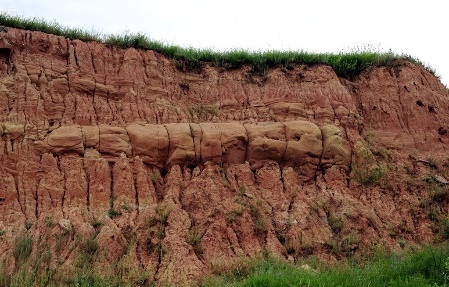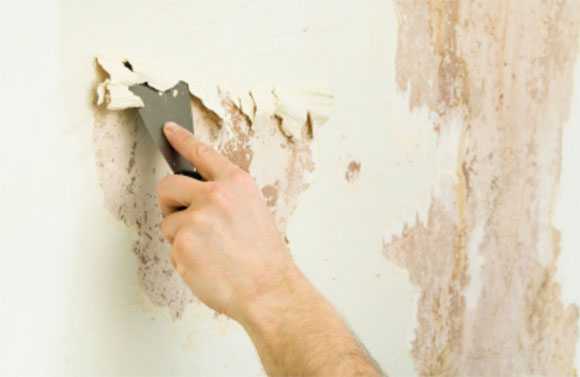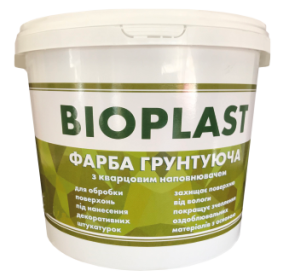 +38 050 355 22 70
+38 050 355 22 70
 +38 050 347 79 74
+38 098 591 40 79
+38 050 347 79 74
+38 098 591 40 79
How to prepare clay plaster for applying liquid wallpaper
 In practice, we are faced with the fact that there is not only a classical way of preparing walls, such as, for example, cement-sand plaster or gypsum plaster. From time to time we have to deal with surfaces that were prepared 30 or more years ago using technologies that were popular even before the end of the 20th century. Such preparation methods include plastering surfaces with clay.
In practice, we are faced with the fact that there is not only a classical way of preparing walls, such as, for example, cement-sand plaster or gypsum plaster. From time to time we have to deal with surfaces that were prepared 30 or more years ago using technologies that were popular even before the end of the 20th century. Such preparation methods include plastering surfaces with clay.
 Most often, this method of preparation can be found in the countryside. First of all, because clay, for such an area, the material is available, and practically free. Also, an important factor is the relatively low thermal conductivity of clay, which provides additional thermal insulation of the room. And at the same time, clay has a high vapor permeability, which ensures the natural regulation of humidity inside the room.
Most often, this method of preparation can be found in the countryside. First of all, because clay, for such an area, the material is available, and practically free. Also, an important factor is the relatively low thermal conductivity of clay, which provides additional thermal insulation of the room. And at the same time, clay has a high vapor permeability, which ensures the natural regulation of humidity inside the room.
It is important to note that clay plaster is prone to the formation of microcracks, which are often not critical for its strength characteristics. However, this feature is not the best suited for decorative painting or gluing roll wallpaper. However, liquid wallpaper, due to its elasticity, neutralizes this lack of clay plaster, and microcracks will not form on the decorative surface. And most importantly, liquid wallpaper, like clay plaster, has thermal insulation and vapor permeability, and complement these useful similar properties to each other.
However, liquid wallpaper, due to its elasticity, neutralizes this lack of clay plaster, and microcracks will not form on the decorative surface. And most importantly, liquid wallpaper, like clay plaster, has thermal insulation and vapor permeability, and complement these useful similar properties to each other.
Preparing clay plaster for liquid wallpaper is simple and inexpensive. The main thing is to carefully and accurately follow the procedures listed below.
1. For the correct preparation of clay plaster for the application of liquid wallpaper, it is important first of all to make sure that the clay plaster adheres well to its base, parts do not fall off from it, and there is no spontaneous shedding. If such zones are present, they must be removed.
2. Make sure that paint residues, and even more so whitewash, are removed from the surface of the clay plaster. Any residues of these will prevent further layers from adhering to the clay. It is most convenient to clean paint or whitewash from clay by removing the top layer with a spatula.
 3. The cleaned clay surface, without sagging, is covered with deep penetration acrylic primer in two layers. The second layer is applied after the first has dried. If, in your opinion, the surface of the clay is not strong enough, and when rubbing with the palm of your hand, slight shedding is still present, then you can use concentrate acrylic primer. They will help to strengthen the surface.
3. The cleaned clay surface, without sagging, is covered with deep penetration acrylic primer in two layers. The second layer is applied after the first has dried. If, in your opinion, the surface of the clay is not strong enough, and when rubbing with the palm of your hand, slight shedding is still present, then you can use concentrate acrylic primer. They will help to strengthen the surface.  For example, the Aquablok primer-impregnation from the BIOPLAST trademark. The first layer of Aquablock is applied diluted with water in a ratio of 1: 5. After the first layer has dried, in order to fix it with the second layer, Aquablock is applied without dilution, in a concentrated form. The fact is that to improve the strength of clay plaster, especially when applied in a thick layer, plant fibers were often added to the solution: hay, flax, sawdust, etc. And surface treatment with undiluted primer-impregnation Aquablock will give the clay plaster not only surface strength, but also prevent the contact of plant fibers with water when applying liquid wallpaper, and therefore will reduce to zero the likelihood of yellow spots bleeding through the applied liquid wallpaper.
For example, the Aquablok primer-impregnation from the BIOPLAST trademark. The first layer of Aquablock is applied diluted with water in a ratio of 1: 5. After the first layer has dried, in order to fix it with the second layer, Aquablock is applied without dilution, in a concentrated form. The fact is that to improve the strength of clay plaster, especially when applied in a thick layer, plant fibers were often added to the solution: hay, flax, sawdust, etc. And surface treatment with undiluted primer-impregnation Aquablock will give the clay plaster not only surface strength, but also prevent the contact of plant fibers with water when applying liquid wallpaper, and therefore will reduce to zero the likelihood of yellow spots bleeding through the applied liquid wallpaper.
4. The next step is, if necessary, level the surface and give it a light color tone.  This is necessary so that the red-terracotta base of the natural clay color does not appear through the layer of liquid wallpaper. This is especially important for light shades of liquid wallpaper. This can be done in two ways. The first way is to putty it with starting or finishing putty. It is preferable if the surface irregularities are more than 2 mm. If the surface of the clay plaster was prone to crumbling and destruction, then such a surface must be covered with a starting gypsum putty with a reinforcing mesh. This will add extra surface strength. After drying, the plastered surface must be covered with acrylic primer.
This is necessary so that the red-terracotta base of the natural clay color does not appear through the layer of liquid wallpaper. This is especially important for light shades of liquid wallpaper. This can be done in two ways. The first way is to putty it with starting or finishing putty. It is preferable if the surface irregularities are more than 2 mm. If the surface of the clay plaster was prone to crumbling and destruction, then such a surface must be covered with a starting gypsum putty with a reinforcing mesh. This will add extra surface strength. After drying, the plastered surface must be covered with acrylic primer.  The second method can be applied if the surface was firm and even – paint it with BIOPLAST primer paint or its analogs. Once dry, it will leave the surface white and slightly rough.
The second method can be applied if the surface was firm and even – paint it with BIOPLAST primer paint or its analogs. Once dry, it will leave the surface white and slightly rough.
The measures described above are quite enough to start the process of applying liquid wallpaper to clay plaster. Successful repairs!



